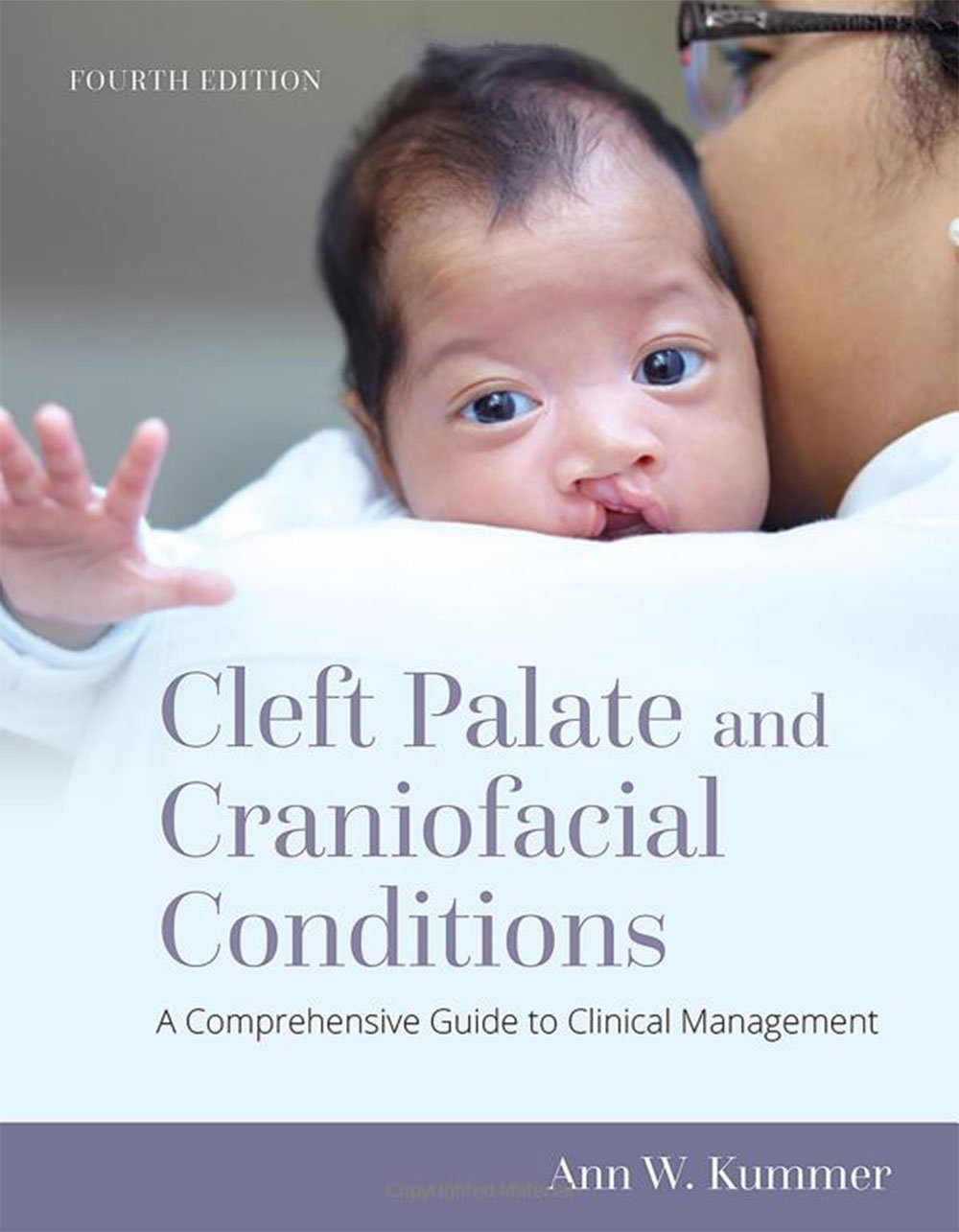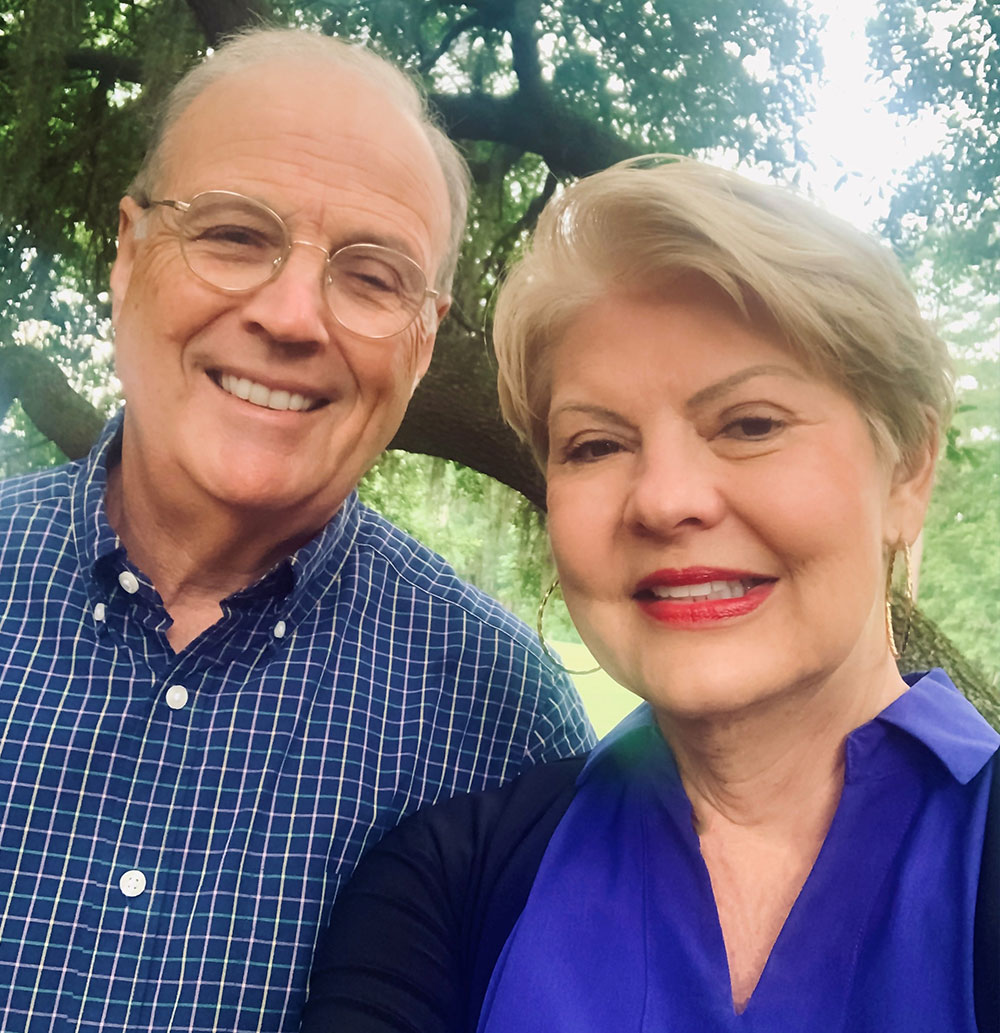Dr. Ann Kummer Wrote the Book on Cleft Care Management — Literally
Why this cleft speech pioneer is so passionate about donating to Smile Train

Dr. Ann Kummer is a leading authority on clefts and speech. She is also a passionate Smile Train supporter and an advisor to our global speech programs. We caught up with her to discuss how she came to this field, why she is so passionate about Smile Train’s model, how she sees her legacy, and much more.
Tell me about your background and how you decided to go into cleft speech pathology.
I grew up in northern Kentucky, across the river from Cincinnati. I met my husband in fifth grade in a ballroom dancing class. We were in the same seventh-grade class, too, and he asked me to go steady. I said no.
By the end of our junior year of high school, we had started dating, but went to college in different states. We were apart for four years but maintained our relationship. We decided we wanted to get married after graduation, but I wanted to go to medical school and he wanted to go to law school. That wasn't going to work because one of us had to make a living.
My father was an ear, nose, and throat doctor, and he suggested I look into speech pathology, so I did. I finished my bachelor’s and master’s degrees in four years and a summer, got married, worked while my husband was in law school, and then moved back to Cincinnati, where I got my dream job: working at Cincinnati Children's Hospital. I was assigned to the craniofacial team after a few years, even though I didn't know anything about craniofacial disorders, including clefts. So I got a big fat book and read it cover to cover. That's when I knew I wanted to get really involved with this area because it was the medical aspect of speech pathology, which is what I really wanted to do.
I decided to get another advanced degree and chose to pursue a Ph.D. in speech pathology with a focus on clefts and other craniofacial anomalies. I had found my special niche, and this became my passion.
My eventual job title was Senior Director of the Speech-Language Pathology Department at Cincinnati Children's. We started out with three speech pathologists; by the time I retired a few years ago, we ended up with somewhere between 150 and 160 in our department, spread across 12 locations. I did a lot of administration and leadership work, but I never gave up doing clinical work. My passion was always working with children with clefts.

You’ve accomplished so much in your career. What are you proudest of?
Although I loved being a leader and developing a very well-respected program at Cincinnati Children’s, I am most proud of my contributions to cleft care through my research, teaching of graduate courses, doing lectures and seminars nationally and internationally, and finally, writing a textbook on clinical care for children with clefts.
I wrote my textbook in the late ‘90s, early ‘00s because I was scheduled to teach the cleft palate class at the University of Cincinnati, but when I looked at the textbooks that were available, there was not one that adequately covered clinical care for children with clefts. Students need to know more than past research. They need basic information, including how to: do an evaluation, make an accurate diagnosis, make the right recommendations, use the right treatment strategies in therapy, and work with others on a cleft team.

And so I thought, well, I’m just going to call a publisher and see if anybody’s interested — and they were! So, I wrote that book and it’s now in the fourth edition. The current edition is called Cleft Palate and Craniofacial Conditions: A Comprehensive Guide to Clinical Management.
I’m very proud of this book because it is written by a clinician for clinicians. We were able to do the current version in a way that is very affordable and accessible to cleft care providers around the world. Also, this edition includes a full graduate-level course, with more than 20 hours of lectures, worksheets for active learning, tests for each chapter, handouts for parents, and almost 300 short videos of actual patients.
As for the seminars, I'm passionate about educating professionals about managing patients with clefts so that they make appropriate decisions for treatment. Unfortunately, a course on cleft palate and craniofacial conditions is not a requirement for graduate students in speech-language pathology. Therefore, most speech-language pathologists (SLPs) have little knowledge about managing children with clefts, craniofacial anomalies, or other resonance disorders.
But the truth is, whether they work with children or adults, they will run into patients with these issues. So SLPs encounter these patients but have no clue what to do with them. A lot of times, they put these patients in speech therapy when the problem is structural — in other words, the patient needs surgery instead. As a result, some patients spend years in therapy that doesn’t improve their speech but does hurt their self-esteem because they're being asked to do something they physically can't do. To me, that is tragic.
Overall, I've dedicated my life to educating SLPs, surgeons, and dental professionals who treat patients with clefts so that more children will receive the right type of treatment and have better speech outcomes.
How did you discover Smile Train? Why support us and not other cleft charities?
I have done mission trips with other cleft organizations and found that I could not make an impact as I expected because the surgeries that they do are primary lip and palate surgeries, not surgeries for speech. And their focus is often on quantity of surgeries rather than quality.
I was also disappointed that these mission groups provided services each year to various countries, but didn't do anything to teach in-country professionals how to do the surgeries themselves. That’s why I so support Smile Train’s “teach a man to fish” model of providing resources and training to in-country professionals and then having those trained go on to train their peers. This is a more cost-effective model and is more respectful to in-country providers. It is also more sustainable, in that it impacts far more children than a mission visit possibly could.
Thank you for advising our Programs team on cleft speech care. Can you go into any specifics of what you’ve done?
I worked with Smile Train on developing forms for patient evaluations that can be used to determine outcomes of cleft palate and speech surgeries. The goal was to make the data forms as quick and easy to fill out as possible, which will go a long way in saving partners valuable time and giving them more data to work with.
I’ve also worked with Smile Train to donate copies of my book to partners. I’m hopeful that they will help many cleft centers, especially those that don't yet have SLPs.
Why is making yearly donations to Smile Train so important to you? How does it feel to know that you're changing more and more children's lives every year?
Because I’m focused on education, my donations will go to educating their cleft care providers — and not just SLPs, but the whole team. Smile Train is such a good vessel for that because their whole focus is to train providers to provide excellent cleft care, which so resonates with my passion.
Why did you decide to take the additional step of making a gift to Smile Train in your will through our Legacy of Smiles program?
My husband and I have been fortunate. We've both had good careers and we live relatively simply. Both of our boys are well educated and have very good jobs, so we’re not worried about them.

We want to make sure that, when we're gone, we leave a lasting impact on this earth that will continue to make a difference, and we knew we could do that through Smile Train.
What would you say to others considering making a legacy gift to Smile Train, especially those who might not be as connected to cleft care or the cleft community as you are?
I would say that you can trust Smile Train to use the dollars wisely. I trust Smile Train to use the money in a way that's going to help many children around the world. Smile Train’s model is a more sustainable and effective way of doing charity than those organizations where they just go in, do the surgery, then leave.
By supporting education and funding cleft teams around the world — especially when those cleft teams are then going on to train others — I know I can have an exponentially larger impact.
How do you see your personal legacy? What do you think the long-term impact of your gift will be for the global cleft community?
I hope that people remember me as someone who was very passionate about helping children affected by clefts. I also hope that with this gift, my husband and I are able to make a difference for many children in the world.
That's all I want to do.
Everyone has a smile to give. Everyone can help secure a better future for children with clefts by making a gift to Smile Train.
